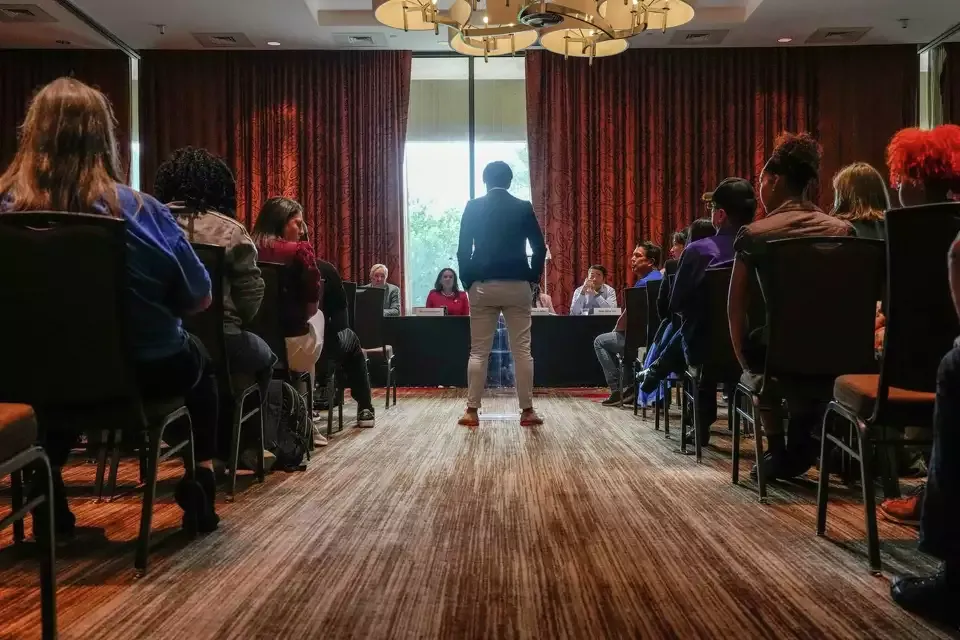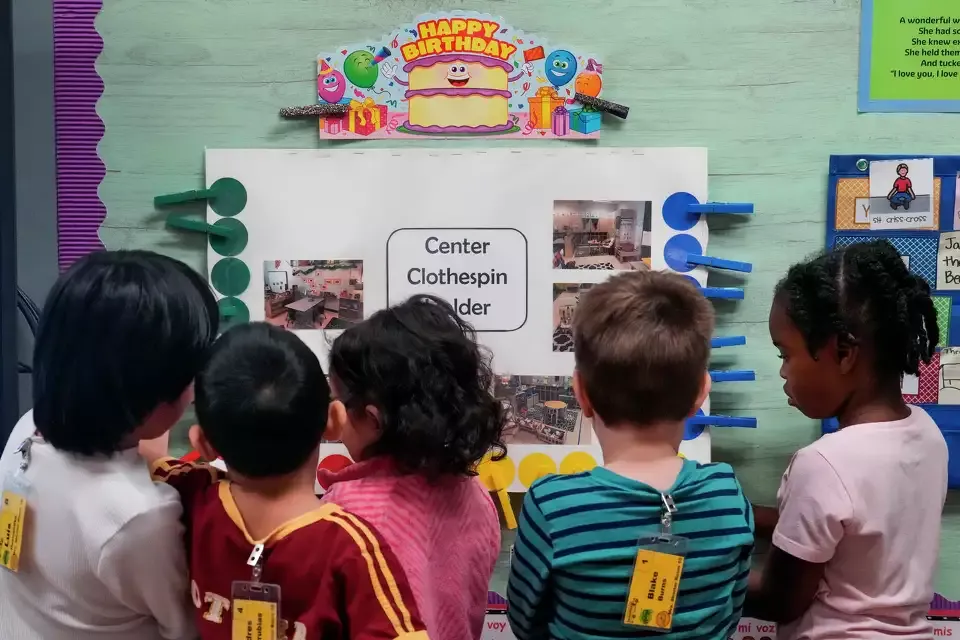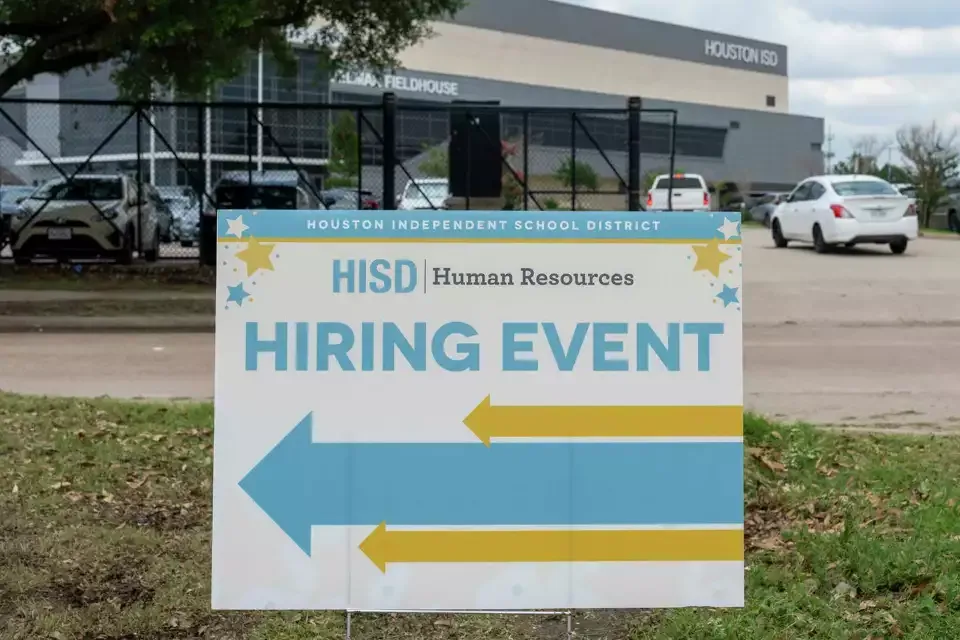|
|
 |
|
| CASE Report
Smart Brevity ®
count: 5 mins...1281 words
CASE is a collective of Houstonians committed to ensuring every student within Houston Independent School District (HISD) has the opportunity to receive a high-quality education.
If you would like to continue receiving updates, opt-in here.
|
|
Correcting the Record: Inaccuracies Mar Community Meeting
 Earlier this week, the local teacher’s union hosted state lawmakers for a community meeting in which HISD parents and students discussed their thoughts on the HISD intervention.
Unfortunately, in that meeting there were some misstatements
of fact that we’ll clarify here:
-
One group characterized the intervention as “ discriminatory
”.
This couldn’t be further from the truth. Since the intervention began, HISD’s lowest-performing schools have been flooded with resources
, their teachers have been given raises
, and those neighborhoods have been prioritized for wrap-around supports. To characterize the HISD interv ention as “discriminatory” is to ignore the massive, unprecedented investments that the new leadership has made for the neediest students.
-
“
The recent takeover of schools in HISD, particularly those serving predominantly students of color, represents a significant step backwards in our fight for educational equity.
”
Educational equity is the opposite of what was happening before the intervention. Students with low socioeconomic status were being graduated through
waiver abuse
,
students with special needs were being ignored
, and
minority students were allowed to fail state exams year after year after year
. Now, all of those problems have been addressed. The latest test scores show that the lowest performing students are catching up to their peers with higher socioeconomic status
, which is evidence that more students are being provided the tools they need to succeed.
The National Equity Project defines educational equity
as “each child receives what they need to develop to their full academic and social potential.” There is no doubt that this is what has happened during HISD’s intervention.
-
“
The takeover reinforces a damaging narrative that these schools are inadequate, perpetuating a cycle of disenfranchisement
.”
This narrative may indeed seem damaging, but before the intervention, it was absolutely true. State Representative Harold Dutton, the Houston state representative that authored the legislation that eventually resulted in the intervention, noted that
Kashmere High School, which had failed for seven straight years, had never had a certified math teacher
. What’s more,
students were also being physically harmed by Kashmere staff
. This is the very definition of an inadequate school. Now that HISD has new leadership, Kashmere students are saying,
“[The changes were] necessary because
it was kind of like all over the place last year, but now it’s all way better.”
-
“
We are having to do this today because the Republicans in Austin refuse to do their jobs
.”
The HISD intervention was implemented due to a
bipartisan bill
that had
near unanimous support
from the Texas legislature.
In fact, the legislation enabling the intervention to take place was filed by a democrat, not a republican
. The fact is that both sides of the political spectrum knew that something drastic had to be done to save HISD. The intervention was their bipartisan solution, and so far,
it has been effective in improving student outcomes
.
-
Some lawmakers encouraged
“voting in November against politicians who supported the state takeover.
”
Ironically, at least three of the lawmakers present at the meeting had previously voted FOR the intervention.
Click2Houston’s story on the event is here.
|
|
HISD to Continue Key Programs Despite Expiration of Federal Funds
 Hundreds of millions of dollars in federal pandemic relief funds ( ESSER
) are set to expire in September, resulting in financial insecurity for many school districts across Texas.
The ESSER funds were just a one-time payment to assist with COVID recovery, but many school districts, including HISD under prior administrations, used the one-time funding to begin new recurring expenses, such as new salaries and vendor contracts. As Superintendent Miles previously said,
“The district chose to spend a lot of (ESSER money) on recurring expenses, salaries, making up the difference on enrollment … and I’m sure that’s a bad strategy because at some point, the money goes away and the salaries do not.”
Although HISD is set to lose $370 million in ESSER funds, the district plans to keep operating several key programs that are linked to improving college readiness and expanding pre-K access.
The Houston Chronicle’s story is here.
Why it matters:
The fact that HISD is able to keep important, student-centered programs going, and in some cases increase investments, is a testament to HISD’s commitment to reducing inefficiencies and prioritizing student outcomes.
By the numbers:
HISD spent more than $1.3 million in federal funds on expanding pre-K last year
, and it plans to increase
the investment by more than $4.6 million to, in part, add 800 more seats for its youngest students next year. It also is continuing to spend more than $3.4 million on providing teaching assistants for pre-K classes, which it previously funded through ESSER.
HISD will also spend nearly $3 million on college and career advisers at high school campuses during the upcoming academic year, an increase
from the $1.7 million it spent last year with ESSER. It is also spending more than $900,000 on supporting college entrance exams like the SAT and ACT, which is nearly double the expenditures from last year.
What they’re saying:
“What we have done is we have focused on what are the most important outcomes that we want to support our students in achieving and how we can directly make every single dollar count towards reaching those outcomes, and I believe when we built the budget from the ground up, we have made decisions that have prioritized achieving those outcomes,” said Kristen Hole, HISD’s chief academic officer.
|
|
HISD’s Principal Academy Produces Next Generation of School Leaders
 One of the new, innovative programs put in place last year by HISD’s new administration is the Principal Academy, which is a “highly selective, year-long residency program [that] prepares full-time [aspiring principals] to meet the rigorous demands of the principal role in HISD.” This program serves as a leadership pipeline for HISD that ensures there are always high-quality, credentialed principals ready to step in and take the helm of HISD schools.
Now that the first cohort has completed the Academy, its graduates are now ready to step into the leadership roles that they have been preparing for over the last year.
Of the 79 “principal apprentices” listed as assigned to campuses this past academic year, 29 have now been hired on as principals at schools around the district.
Houston Chronicle’s story is here.
Why it matters:
Some principal turnover has occurred as a result of HISD’s turnaround efforts. According to David DeMatthews, a University of Texas at Austin education leadership and policy professor, “there needs to be a pipeline of people willing to work in those roles.”
HISD’s Principal Academy is the exact type of pipeline that DeMatthews recommends, and HISD expects students to ultimately benefit the most.
By the numbers:
Only 152 of 257 campuses have retained their original principals, meaning that the majority of campuses will be led by a new principal that has been trained in alignment with HISD’s goals and objectives going forward. This airtight alignment across administration, staff, and teachers will result in better instructional delivery and school management.
What they’re saying:"These principals are the biggest driver of transformation and improvement on their campuses, and their job is hard. As we start the 24-25 school year, we are confident that we have strong leaders on all our campuses and HISD students will benefit from their leadership and expertise, and we know that each of those leaders has made a choice to be a part of the great work happening in our District."
|
|
Did someone forward this email to you? Subscribe here
to receive our weekly updates.
|
|
|
|
|
|
|
|

